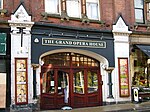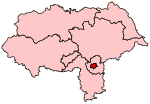Medieval parish churches of York
Church of England church buildings in YorkChurches in YorkDemolished buildings and structures in EnglandGrade I listed churches in YorkLists of buildings and structures in North Yorkshire ... and 4 more
Lists of churches in EnglandRoman Catholic churches in YorkUse British English from September 2013York-related lists
York had around 45 parish churches in 1300. Twenty survive, in whole or in part, a number surpassed in England only by Norwich, and 12 are used for worship. This article consists of a list of medieval churches which still exist in whole or in part, and a list of medieval churches which are known to have existed in the past but have been completely demolished. In 1086, the Domesday Book listed eight churches and a minster (not the current building). The number had declined to thirty-nine by 1428 due to taxation; nineteen medieval churches are in use today.
Excerpt from the Wikipedia article Medieval parish churches of York (License: CC BY-SA 3.0, Authors).Medieval parish churches of York
High Ousegate, York Bishophill
Geographical coordinates (GPS) Address Nearby Places Show on map
Geographical coordinates (GPS)
| Latitude | Longitude |
|---|---|
| N 53.958 ° | E -1.082 ° |
Address
High Ousegate 5
YO1 8RZ York, Bishophill
England, United Kingdom
Open on Google Maps










